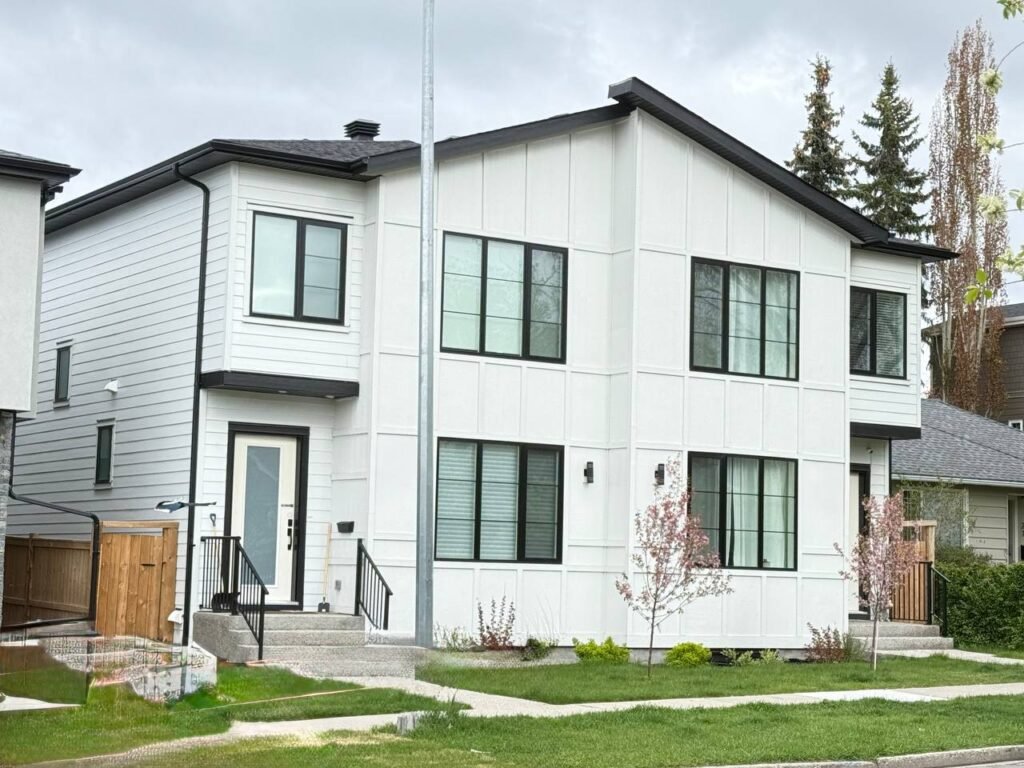
We all want our homes and businesses to look their best, and when an exterior renovation is in the works, choosing fiber cement siding is ideal. It lays the foundation to protect your home and adds style and curb appeal at the same time.
When you want siding that will stand up to pests, all weather conditions, and the test of time, fiber cement is it. We’ve successfully installed this durable product on hundreds of homes with excellent results. And the team at Family Siding can do the same for you.
For anyone trying to choose between cement, vinyl, engineered wood, or metal siding, we’ll outline all the benefits of the fiber cement composite. This is everything you need to know about this versatile product so that you can make a solid siding choice.
What is Fiber Cement Siding?
At its core, fiber cement siding contains cement, sand, and cellulose fibers. Depending on the manufacturer, the composite will also have proprietary additives that work to improve and enhance performance.
Fiber cement siding goes by a few names, including simply cement siding, cement fiberboard siding, and cement board siding. You’ll also find reference to specific manufacturers, like James Hardie siding or Hardie board. Rest assured that whatever it’s called, the base components are the same.
Originally, asbestos was used as a reinforcing material, but it was later replaced with cellulose due to health and safety concerns. Each ingredient serves an important role: the cement gives it concrete-like strength, the cellulose fibers add flexibility to prevent cracking, and the sand offers stability to the entire mixture.
All this functionality means that cement fiberboard siding is one of the best siding options for your home, especially as an alternative to traditional wood or vinyl.
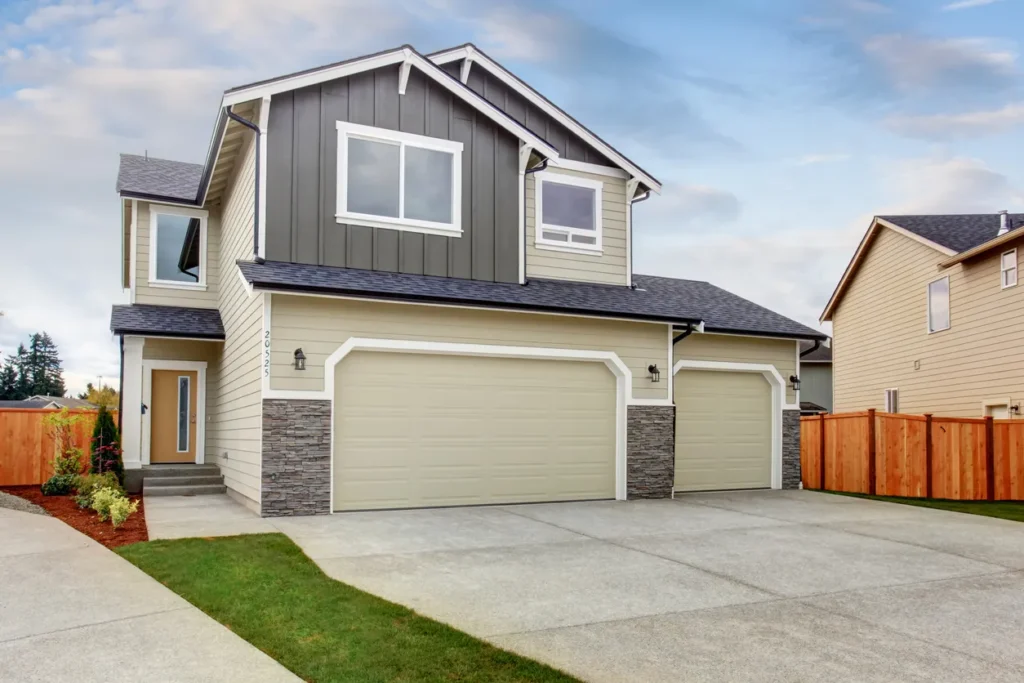
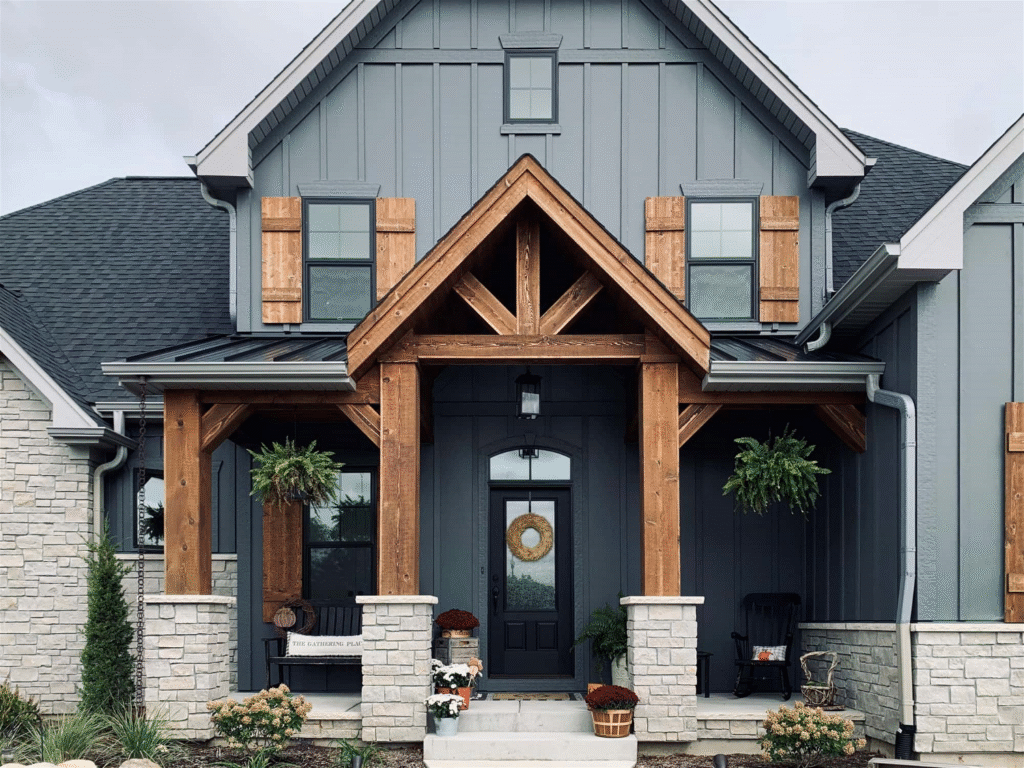
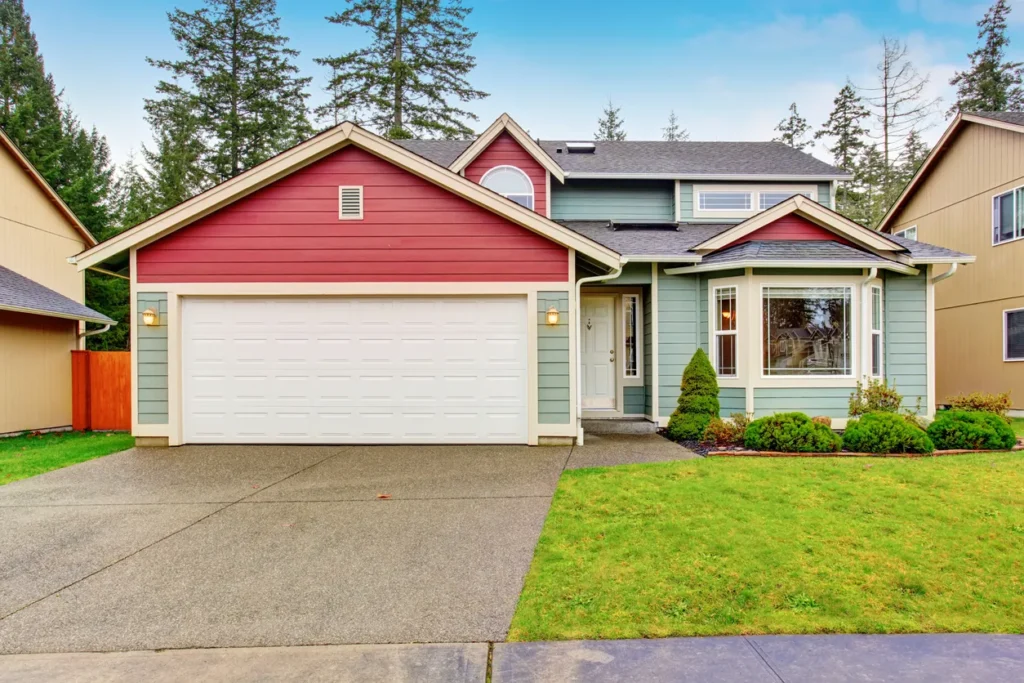
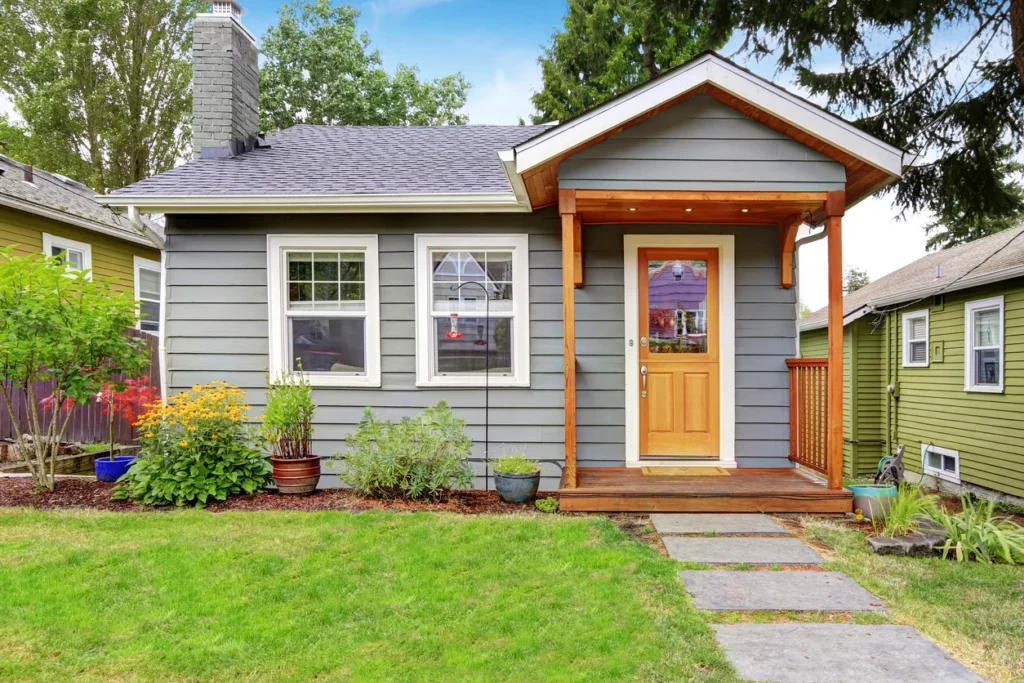
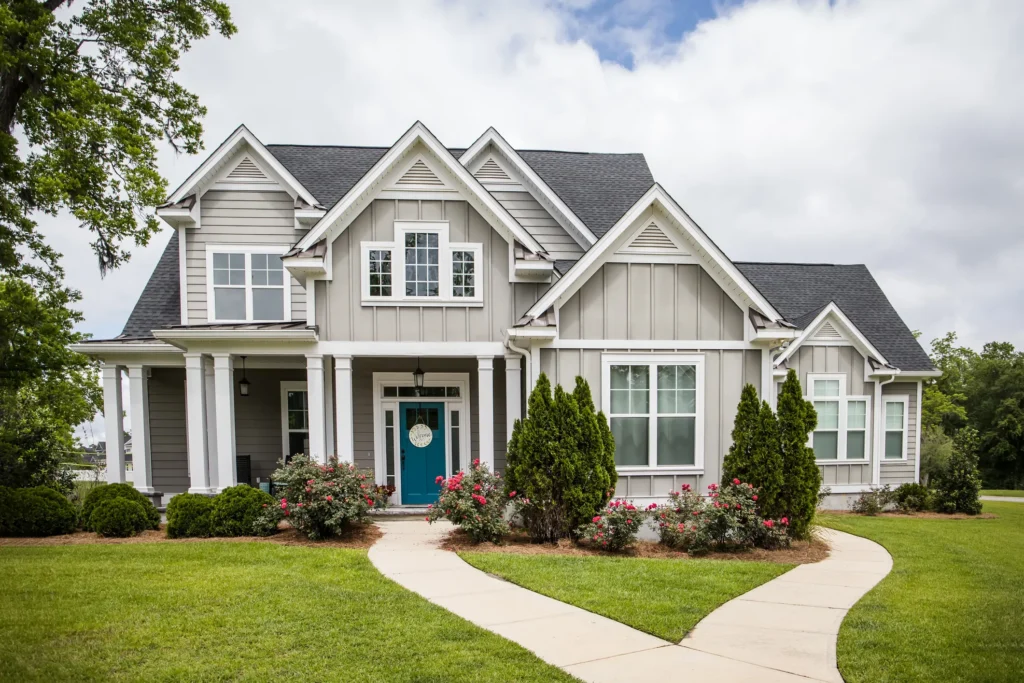
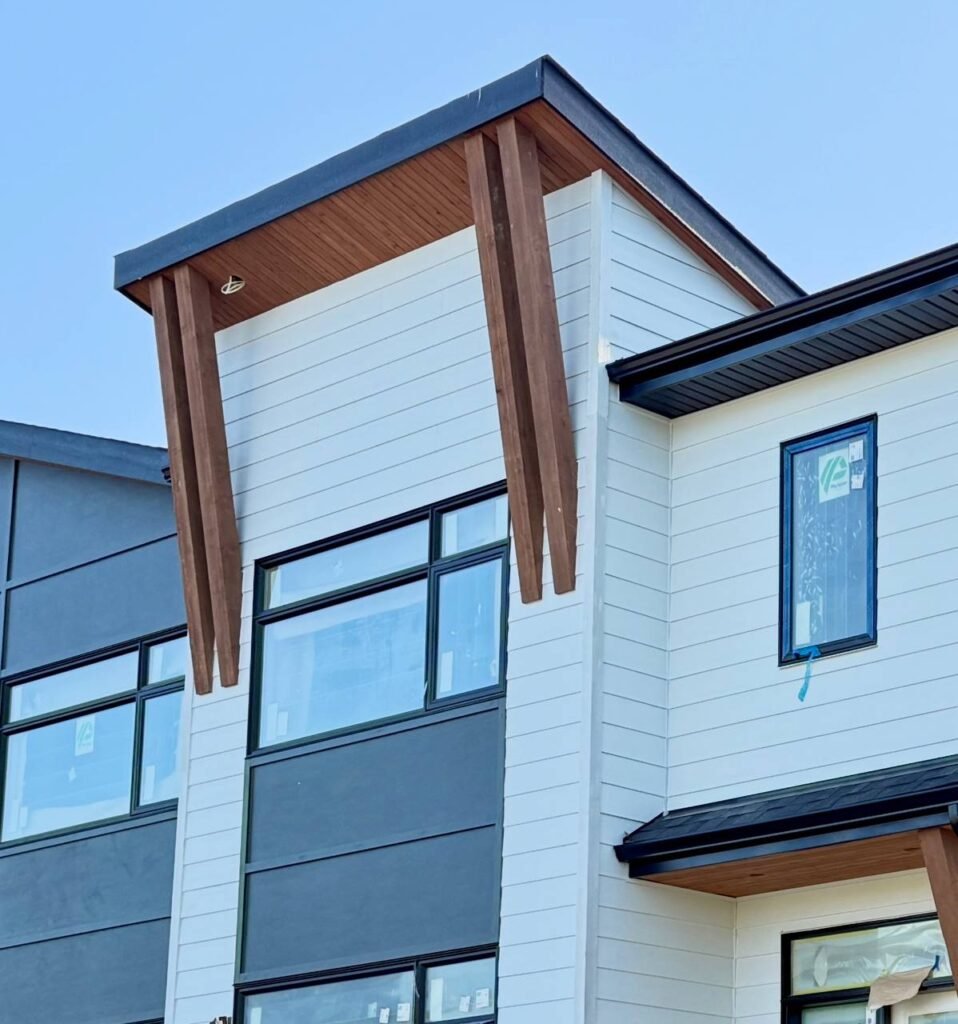
The Main Reasons to Choose Fiber Cement Siding
Cement board is good siding for a number of reasons. It’s solidly built to withstand whatever is thrown its way and requires little maintenance, saving you precious time.
It’s Sturdy and Long-Lasting
Whether you’re worried about pests like termites infiltrating your home, damage from hail or high winds, or moisture seepage, the solution is fiber cement siding. It’s so durable that it will stand up to everything without rotting, warping, or cracking. Just think of it like true concrete siding for your most important asset.
This is a completely non-combustible material that will instantly improve the fire safety of your home, too. And since replacing the siding on any home is a large budget item, you’ll be glad to know that when properly maintained, cement board siding can last well over 50 years.
It’s Very Low Maintenance
Compared to other siding options, especially real wood, fiber cement requires little to no maintenance.
Plan for a cleaning annually. Take steps to limit repairs and water issues by trimming the surrounding shrubs, replacing any cracked or missing caulking, and keeping your gutters in good working order.
It Helps with Soundproofing
Since the composite material is denser than wood or vinyl siding, fiber cement helps keep noise out. It’s actually up to 5 times thicker than the average vinyl product.
It’s Unbelievably Versatile
Achieving your design vision won’t be a problem. Fiber cement comes in so many colours, textures, and finishes that you can mimic wood or stucco without the added maintenance. It accommodates both bold and muted colour palettes easily and comes in styles that work horizontally or vertically, or as shingles or panels.
It Looks Good
It may sound obvious, but cement boards offer more of a luxury look without a luxury price. Your curb appeal goes through the roof, and it never looks cheap when installed professionally. And that’s a good thing, because you’ll be stuck with it for a long time!
Is Cement Siding Worth It?
If you’re torn between this and another form of siding, here’s a summary of why cement board siding is totally worth it:
- While the upfront expense can be $2.50 more per square foot compared to basic vinyl, cement fiberboard siding can last more than twice as long. The value is actually very good.
- Upgrading to fiber cement will contribute to the soundproofing of your home, and it pairs very well with insulation installation for added energy efficiency.
- New fiberboard cement siding boosts your home’s curb appeal and resale value instantly.
- Manufacturers guarantee their fiber cement products. With James Hardie, for example, you get a 30-year warranty. The ColorPlus® finishes also come with a 15-year warranty for total peace of mind.
- Your weekends won’t be filled with repairs due to pests or maintenance.
The Smart Way to Install Fiber Cement Siding
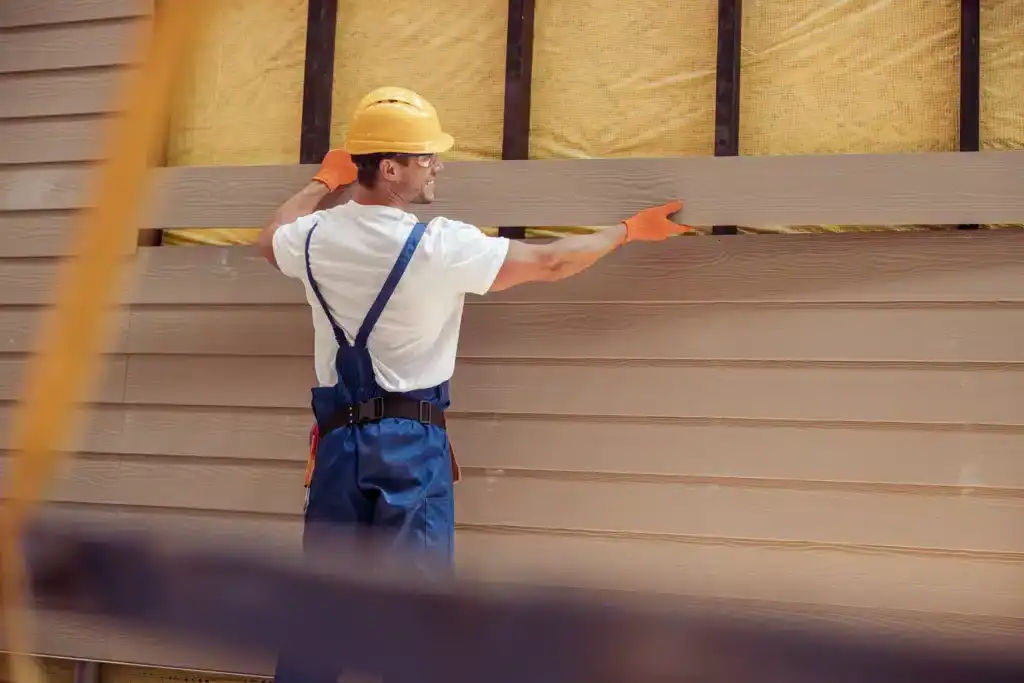
The first thing we need to get out of the way is that fiber cement should be installed by professionals. That’s because of the weight, specialized tool requirements, safety concerns, and the necessary precision. It’s also wise to hire a siding company that is a certified installer, like Family Siding.
Without proper installation, you’ll end up with cracked boards or gaps that compromise the product’s moisture protection. Your professional installer will follow this step-by-step process:
- Remove old siding. Professionals will remove and dispose of the old siding and assess the structure for damage. They’ll make repairs if needed.
- Add a weather-resistant barrier/house wrap. You need to put something under the concrete siding. A weather barrier or wrap will simultaneously increase the moisture protection while ensuring adequate ventilation. The bottom line? The risk of rot, mold, and mildew is significantly lowered.
- Surface levelling. To ensure the perfect canvas for the siding, your installers will level the siding surface using furring strips.
- Install a stater strip. So that the first siding panel has something to lock into, a starter strip is attached.
- Measurements. The professionals will snap chalk lines to make sure the rows are level and cut boards for tricky areas and edges.
- Start the installation. Using the starter strip, the boards will be laid while considering regulations for overlaps, ground clearance, and other building code requirements.
- Trim and flashing installation. Once the main boards have all been fastened, the team will apply the finishing touches of trim and flashing for windows, doors, corners, and horizontal joints.
- Final inspection. Once complete, there is a final inspection to ensure everything is compliant, properly sealed, and meticulously installed.
Additional installation requirements include:
- The siding must always be carried on an edge.
- Not all nail guns are compatible with fiber cement products.
- Cutting should be done with diamond-tipped circular saws attached to a HEPA vacuum system to avoid silica dangers.
Breaking Down the Costs of Fiber Cement
There are 3 main manufacturers of fiberboard cement siding in North America: James Hardie, Allura, and Nichiha. The price of the materials and installation varies enormously based on the size of the house and the difficulty of the actual installation.
Let’s look generally now at the average costs for each of the above brands for plank siding on a 2,000-square-foot house.
| Brand | Average Cost per Square Foot | Estimated Cost Installed |
| James Hardie | $10–$12.75 | $20,000–$25,500 (with Family Siding) |
| Allura | $10–$15 | $20,000–$30,000 |
| Nichiha | $8–$14 | $16,000–$28,000 |
As you can see, the price differences between manufacturers are minimal, but the most common industry standard is James Hardie for its proven durability, quick availability, and variety of finishes.
The Scoop on Fiber Cement Brands
As mentioned, there are 3 prevalent cement board siding brands in the marketplace – James Hardie, Allura, and Nichiha. We’ll compare Hardie to the other two, since it’s the most common.
James Hardie vs. Allura
James Hardie is hands-down the most widely available fiber cement siding in Canada and the US. That means you are much less likely to encounter project delays due to stock issues. There are strong support resources for installers in the James Hardie SIDEMaster® Installation Program to ensure your siding is installed perfectly from the start.
With James Hardie cement fiberboard siding, homes benefit from their patented ColorPlus® Technology. Instead of being painted in the field, the colour is literally baked on during manufacturing for a much more durable finish. Never worry about it fading or chipping like with after-market paint jobs.
Allura cement siding is slightly denser than James Hardie and offers a 50-year warranty. Now, this might sound like it’s the winner, but Allura isn’t nearly as available as James Hardie. In the US, Hardie has 9 manufacturing plants compared to Allura’s 3.
Different climates call for different siding solutions, and that’s why James Hardie has 2 “HardieZones” that cater to differing weather needs. For example, HZ5 boards would be used exclusively in Canada due to the colder conditions, and HZ10 boards would be used in hot, humid conditions like in the Southern US.
Colour is where James Hardie stands out again. Their DreamCollection® offers 700 different colours to choose from. With Allura, the colour palette maxes out at about 30, although custom colours can be created if you have enough lead time. But that can take months.
James Hardie vs. Nichiha
Nichiha is a newcomer to the residential market – their previous focus was entirely on commercial properties. Nichiha could be your siding contender if you’re going for a wood look. Their stamping process ensures less pattern repetition, and due to the force applied during manufacturing, the grain appears deeper, which gives realistic shadows on the finished product.
The main limitation with Nichiha products isn’t durability or colour choice, it’s availability. Currently, the fiber cement line is only available in 13 US states, focused on the Mid-Atlantic and Southeast. So, if you’re not in these regions, the choice of James Hardie vs. Nichiha is simple.
Vinyl vs. Fiberboard Cement: Which Siding Wins?
Now, let’s compare the most-used form of house siding and decide once and for all which is better, vinyl or fiber cement?
| Feature | Vinyl Siding | Fiber Cement Siding |
| Cost (installed by Family Siding) | $7.50–$10 | $10–$12.75 |
| Durability | Moderate, can crack in cold or warp in heat | Excellent, resists impacts and doesn’t warp |
| Lifespan | 20 to 30 years | 50 years or more |
| Appearance | Good colour selection, but it can look less polished | Mimics wood, stucco, or smooth finishes; can be repainted |
| Maintenance | Low, but harder to refresh if faded | Low, repainting is possible for a fresh look |
| Fire Resistance | Can melt near heat or flames | Non-combustible |
| Pest Resistance | No | Yes |
| Weather Resistance | Vulnerable to extreme heat/cold | Performs well in all climates |
| Installation | Lightweight and DIY-friendly | Requires pros and special tools |
| Best Application | Short-term savings, budget projects | Long-term investment, durability, and resale value |
If budget isn’t too much of a concern, fiber cement siding is the winning option when you look at all the factors. And in reality, cement siding is not expensive, given the value it creates.
Environmental Impact and Sustainability
Overall, fiber cement has an average sustainability rating. It’s a mixed bag. The raw materials that go into fiber cement are abundant – sand, cement, and cellulose. There is no drain on critical resources.
On the flip side, cement and concrete production require a lot of energy, so the carbon emissions are a downside. But, comparatively, vinyl siding is made with somewhat undesirable plastics and petroleum-based products.
One of the best environmental benefits of fiber cement is its long lifespan. Materials won’t end up in the landfill prematurely because they last 50 years or more. But unlike aluminum siding, the materials are not recyclable, so they will reach the landfill eventually.
Caring for Your Fiber Cement Products
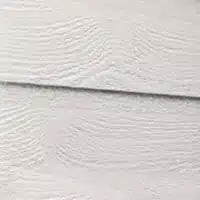

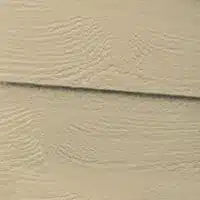
With an investment in siding, you want it to last and last, and the best thing you can do is make sure you take care of it.
Cleaning and General Maintenance
Aim to wash the siding at least annually. All you need is your garden hose for a rinse – start at the top and work your way down. For any stubborn stains, use a soft brush and avoid anything abrasive. A mild detergent should be sufficient for those spots.
It’s a good idea to inspect your home’s exterior seasonally, looking for any maintenance or damage that needs attention. Look for everything from loose boards to chips to cracked caulking.
Tip: Don’t use a pressure washer, as the intensity can lead to damage, and rinse thoroughly to avoid streaks.
Mold and Mildew Prevention
Though rare, you may develop mold or mildew issues, particularly in shaded areas. Clean potential spots before the problem starts, and if it’s too late for that, spot treat with a mixture of vinegar and water or a siding-safe, mild detergent.
Tip: Don’t use bleach, as that can damage the finish, and never let the cleaner dry on the siding – keep it wet.
Painting
Fiber cement finishes generally come in two options: prefinished boards, where the final colour is applied at the factory, or pre-primed boards ready for you to paint.
The prefinished options shouldn’t require any paint, other than the occasional touch-up. If you are touching up, only use approved products.
Unfinished or painted siding will likely require a new coat every 10 to 15 years. This timeline depends entirely on exposure to the sun and other elements. Luckily, fiber cement tends to hold the paint far better than wood, so you won’t be painting too often.
Tip: Only use 100% acrylic paint if you’re going the DIY route.
Prevent Damage
To keep your siding in tip-top condition, don’t assume it’s indestructible. If there is damage caused by weather or accidents, it should be repaired ASAP. If it’s left exposed, it can quickly lead to moisture problems.
Tip: Be careful with lawn equipment around the house, and be extra careful when setting up your ladder.
What Designs Can You Achieve with Cement Siding?
The only limit to your fiberboard cement siding design is your imagination. With hundreds of colours and different finishes, which we have covered already, your vision will become reality.
But there’s more design flexibility with cement siding than you might think. The panels come in traditional lap siding boards, shingles, and trim, and those can be combined in so many ways! Our team can help you decide on the final product, but here are some ideas:
- Craftsman homes – Go for a combination of horizontal lap siding (classic style with overlapping edges), shingles, and wide trim.
- Modern homes and businesses – Your first thought for a modern home might be metal siding like the EasyTrim Panel System, but fiber cement is ideal here, too. Opt for smooth vertical boards for a sleek look.
- Colonial homes – Make symmetry the goal with horizontal board siding in a neutral colour.
- Farmhouse-style homes – Have your home exude country charm with a horizontal installation and eye-catching batten trim to make a real statement. Crisp white is always a classic choice.
The Downsides of Fiber Cement Siding
We know that nothing is perfect, and even something as durable and flexible as fiber cement siding has a few drawbacks. Let’s summarize:
The first disadvantage of cement board is that it’s a bit heavy. While this won’t create any load-bearing issues with foundations or walls, the main issue is with installation. Because it’s a bit heavier, it can take just that little bit longer to install, increasing the overall cost.
To put this in perspective, you can find metal siding that weighs as little as 1 pound/square foot, whereas fiber cement like James Hardie weighs 2.3 pounds/square foot.
Additionally, one of the main problems with fiber cement siding relates to the installation process and silica dust. If not cut properly by a licensed installer, fiber cement products can release harmful silica. Luckily, this is quite easily addressed with saws that have dust collection systems and the proper blade.
Lastly, fiber cement has a couple of sustainability issues. It’s not recyclable at the end of its life, and by itself, doesn’t contribute to the energy efficiency of your home. You’ll need to pair it with insulation for noticeable results.
Is Fiber Cement Siding the Right Choice for Your Home or Business?
All in all, cement siding is a premium product that is a significant upgrade from the vinyl siding standard, but it’s not right for everyone.
For those who move frequently or house flippers, cement siding may not be worth the investment. And if you have a limited budget, there are cheaper options out there.
Anyone who wants to improve curb appeal and, as a result, resale value, or is planning to stay long-term, will benefit from this siding’s features. Plus, if an elevated design and luxury look are important or you live in an extreme climate, fiber cement is an obvious choice.
Start Your Fiber Cement Journey Today!
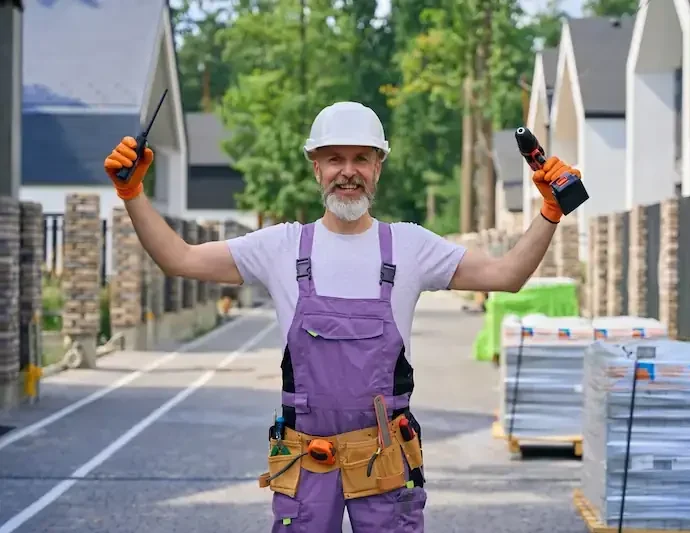
There are tons of siding options out there, from conventional vinyl siding to AL13 to Lux panels, and fiber cement falls right in the middle. It’s not too expensive, lasts for generations, and makes your home look great.
So, if you’re sold on all the advantages and want to commit to a high-end exterior renovation, ask us about all our cement siding options today. We’ll help you transform your home, business, or vacation property into something truly special. And above all, we’ll make sure the rain, snow, and heat stay outside where they belong!
 James Hardie
James Hardie Vinyl
Vinyl Cedar
Cedar AL13 covering
AL13 covering Aluminum
Aluminum Metal
Metal Engineered Wood
Engineered Wood Lux Panel
Lux Panel Longboard
Longboard Easy Trim Quick Panel system
Easy Trim Quick Panel system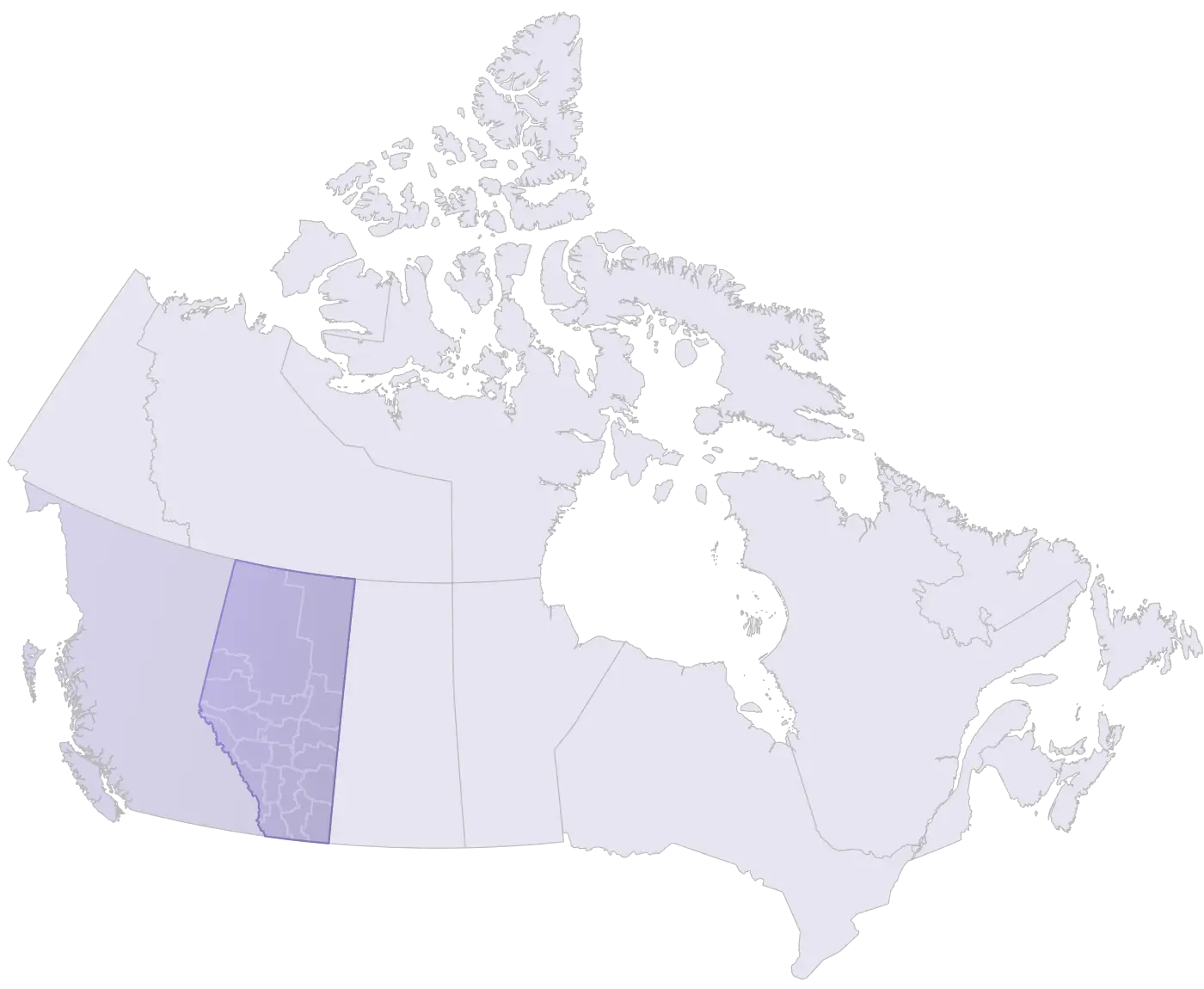

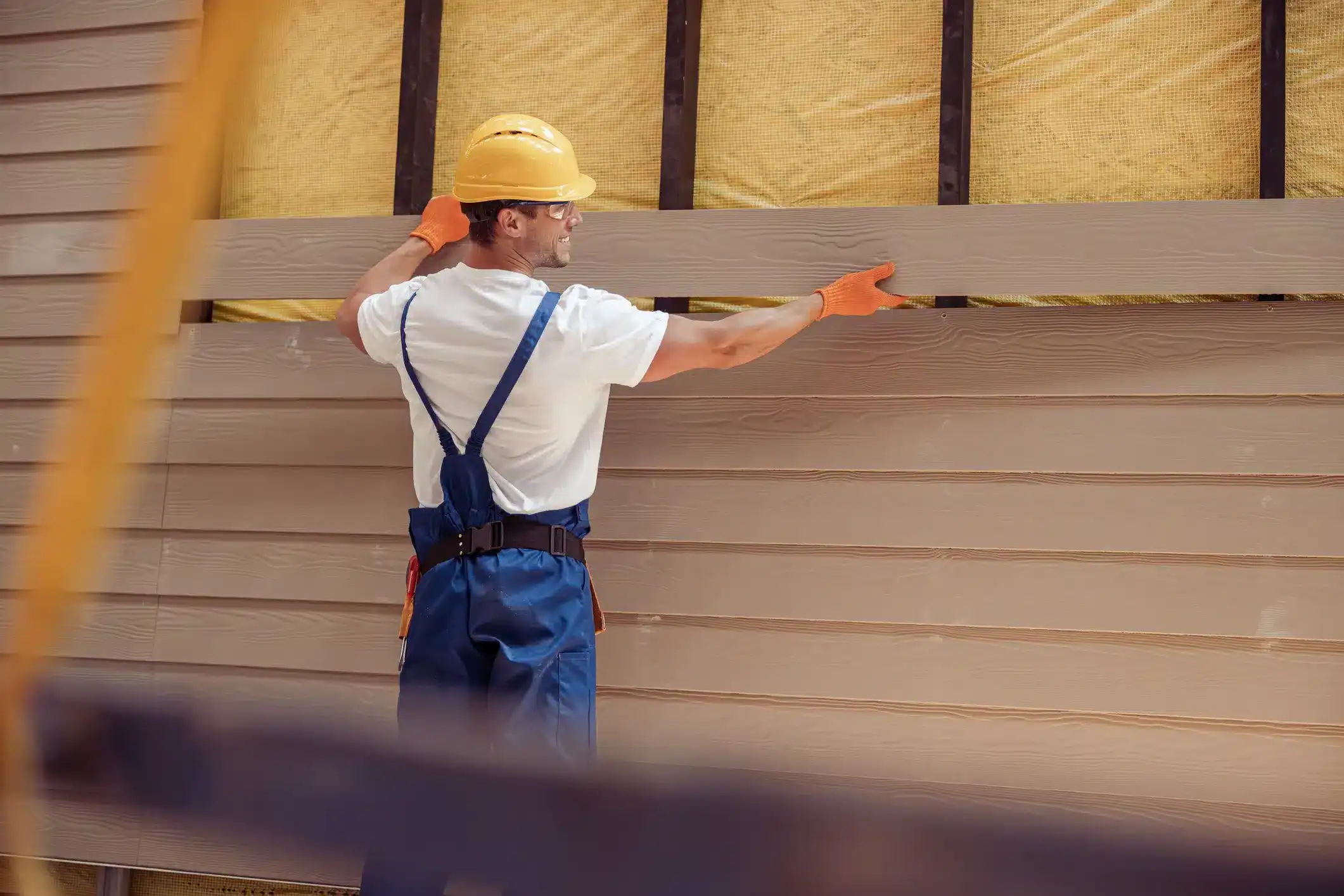
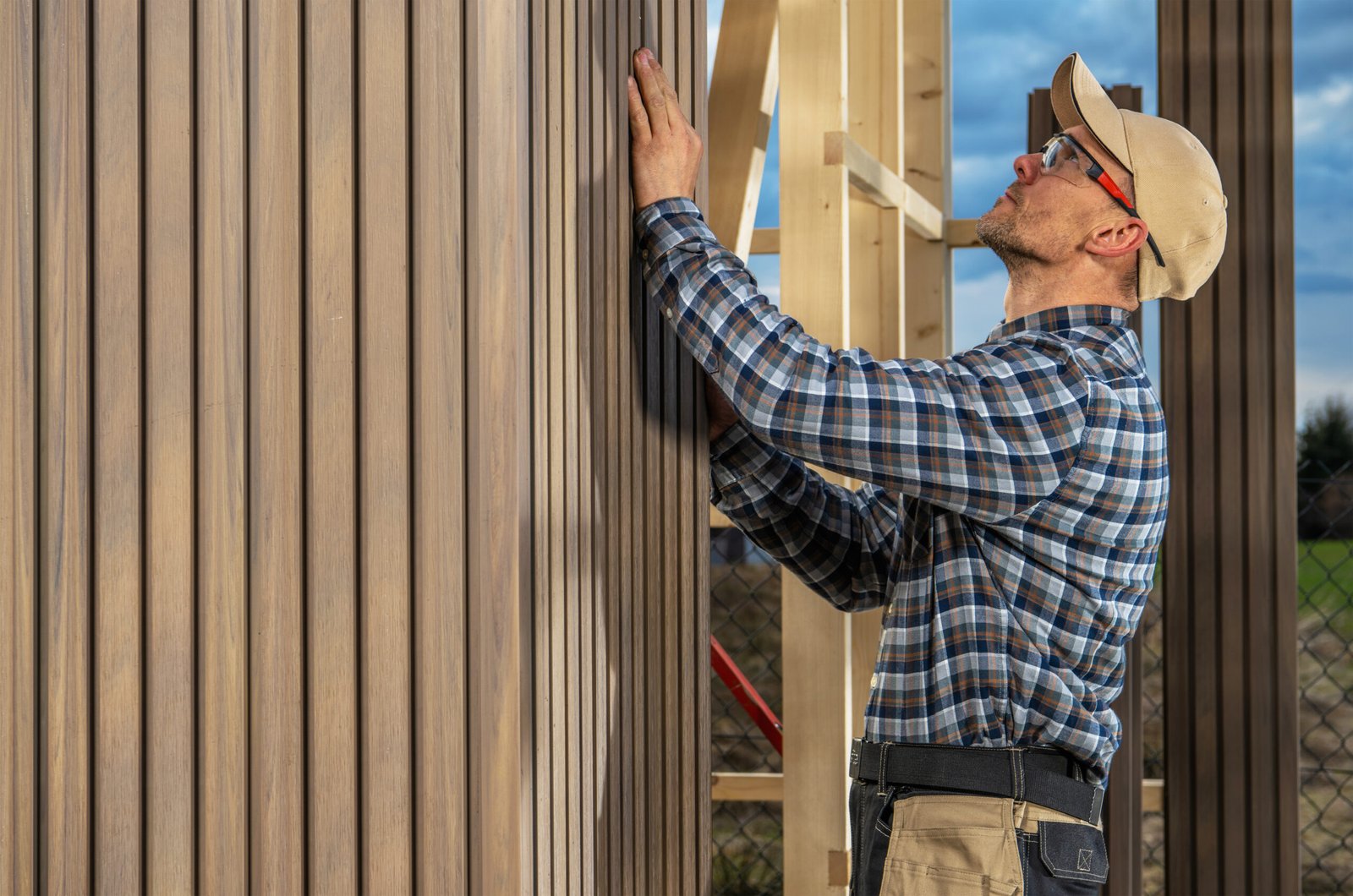
Leave a comment